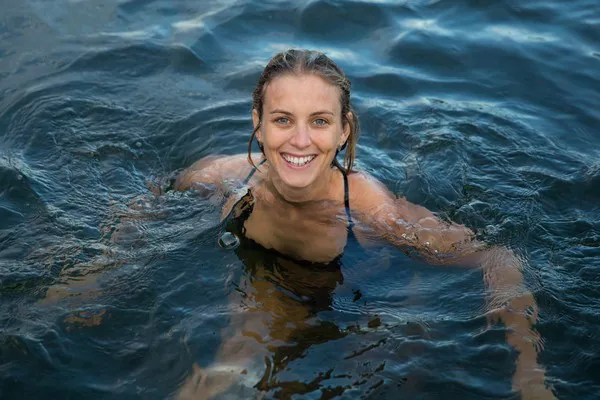Diving is a critical skill in swimming. A good dive sets the stage for a strong start in any race. It combines technique, strength, and precision. Whether you are a beginner or an advanced swimmer, mastering the dive can significantly improve your performance. In this guide, we will explore the fundamentals of diving, different types of dives, techniques for improvement, and tips for maximizing your potential.
Understanding the Basics
Importance of a Good Dive
A good dive gives you an early lead. It helps you maintain momentum. Proper technique reduces drag. This means you can swim faster. A poor dive can set you back. You might lose valuable time.
Types of Dives
- Standing Dive: Common in competitions. Requires balance and precision
- Running Dive: Used in open water swimming. Adds extra speed.
- Block Dive: Performed from a starting block. Common in pool races.
- Tumble Turn Dive: Used in medleys and relays. Involves a flip turn and dive.
Equipment Needed
- Swimsuit: Tight-fitting to reduce drag.
- Goggles: Protects eyes and improves vision underwater.
- Swim Cap: Reduces drag and keeps hair out of your face.
- Starting Block (if available): For practicing block dives.
Preparing for the Dive
Physical Conditioning
Strength and flexibility are key. Focus on core strength. Strong legs and arms are crucial. Incorporate these exercises:
- Core Workouts: Planks, sit-ups, and leg raises.
- Leg Strength: Squats, lunges, and calf raises.
- Arm Strength: Push-ups, tricep dips, and pull-ups.
- Flexibility: Stretching exercises for the shoulders, back, and legs.
Mental Preparation
Mental readiness is as important as physical conditioning. Visualization techniques can help. Imagine yourself performing the perfect dive. Focus on the feeling of the dive. Stay calm and composed.
Proper Warm-Up
A good warm-up prepares your muscles. It reduces the risk of injury. It also enhances performance. Include these in your routine:
- Light Jogging: Increases heart rate and warms up muscles.
- Dynamic Stretches: Arm swings, leg swings, and torso twists.
- Practice Dives: Start with a few practice dives to get into the groove.
Technique Breakdown
Stance and Positioning
- Feet Placement: Position your feet shoulder-width apart.
- Knees Bent: Slightly bend your knees for a better launch.
- Body Lean: Lean slightly forward, but keep your balance.
- Arms Position: Extend your arms in front of you, hands together.
The Takeoff
- Push Off: Push off with your legs forcefully.
- Extend: Fully extend your body as you leave the block or edge.
- Head Position: Keep your head down, looking towards your hands.
Entry into Water
- Streamline Position: Your body should form a straight line.
- Minimal Splash: Aim for a clean entry with minimal splash.
- Angle: Enter the water at a slight angle to maintain speed.
Underwater Phase
- Dolphin Kick: Perform a few strong dolphin kicks.
- Streamline: Maintain a streamlined position to reduce drag.
- Transition to Stroke: Gradually transition to your swimming stroke.
Practicing Your Dive
Drills and Exercises
- Standing Jumps: Practice jumps to improve leg strength and takeoff power.
- Streamline Glide: Push off the wall and glide in a streamlined position.
- Dolphin Kicks: Perform dolphin kicks underwater to enhance your underwater phase.
Feedback and Improvement
- Video Analysis: Record your dives and analyze your technique.
- Coach Feedback: Seek feedback from a coach or experienced swimmer.
- Self-Assessment: Reflect on your dives and identify areas for improvement.
Consistency is Key
Regular Practice: Dive practice should be a regular part of your training.
Set Goals: Set specific goals for each practice session.
Track Progress: Keep a log of your dives and track your progress over time.
Advanced Techniques
Block Dives
- Starting Block Position: Position yourself properly on the starting block.
- Reaction Time: Improve your reaction time to the starting signal.
- Explosive Power: Focus on explosive power to get a strong start.
Open Water Dives
Running Start: Practice running starts for open water swims.
Environmental Awareness: Be aware of the water conditions and adjust your dive accordingly.
Safety: Always prioritize safety in open water dives.
Competitive Diving
- Mental Focus: Stay mentally focused and composed during competitions.
- Race Strategy: Incorporate your dive into your overall race strategy.
- Adaptability: Be adaptable and ready to adjust your dive based on the competition conditions.
Common Mistakes and How to Avoid Them
Poor Stance
- Feet Too Close or Too Wide: This affects balance. Keep feet shoulder-width apart.
- Knees Too Bent or Too Straight: Find the right amount of bend for optimal power.
Ineffective Takeoff
- Weak Push: Focus on leg strength. Practice explosive jumps.
- Incorrect Arm Position: Keep arms extended and aligned with your body.
Splashy Entry
- Poor Streamline: Work on maintaining a straight, tight body position.
- Angle Too Steep or Too Shallow: Adjust your entry angle for minimal splash.
Inefficient Underwater Phase
- Poor Dolphin Kick: Practice dolphin kicks to improve technique.
- Breaking Streamline Too Early: Stay streamlined as long as possible before transitioning to your stroke.
See Also: How to Get Better at Paddle Boarding
Tips for Success
Stay Relaxed
Tension can hinder your performance. Stay relaxed and focused. Trust your training.
Consistent Practice
Practice makes perfect. Consistent practice is essential. Keep working on your technique.
Seek Guidance
Don’t hesitate to seek guidance. Coaches can provide valuable feedback. Learn from experienced swimmers.
Analyze Your Performance
Regularly analyze your dives. Look for areas to improve. Make adjustments as needed.
Conclusion
Diving is an essential skill for any swimmer. A good dive can set you up for success. Focus on technique, strength, and mental preparation. Practice regularly and seek feedback. By following these guidelines, you can master the art of diving and enhance your swimming performance.

